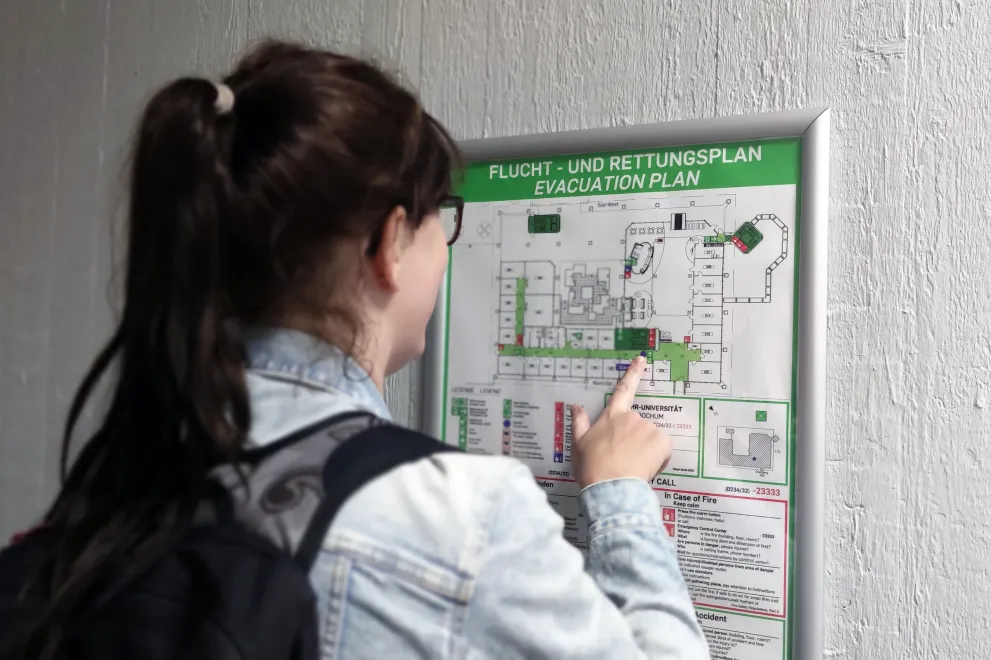
Not just when the worst comes to the worst
Traffic, escape and rescue routes, emergency exits
Find out about emergency exits and the escape and rescue routes of the buildings you regularly use in advance, not just in an emergency. It is also important to handle fire doors and traffic routes correctly in everyday life.
Emergency exits and escape and rescue routes are visibly marked in all buildings. You will find corresponding plans in corridors and elevator lobbies. In addition to the emergency exits and escape and rescue routes, you should also know the assembly points in the buildings in which you are staying. You can find these on the page Behavior in the event of accidents, fires and building alarms.
Keep traffic routes clear - also in the lecture hall
The following applies to escape and rescue routes, but also to traffic routes:
- Keep paths clear, do not restrict them
- Keep the doors of lecture halls and seminar rooms clear
- do not store any objects in the paths - not even for a short time
- do not place bags or similar items on the steps in lecture halls
- do not bring additional chairs into lecture halls or seminar rooms
Smoke and fire doors, emergency exits: Open, but never open
Smoke and fire doors should prevent a fire from spreading uncontrollably through the building. Just like emergency exit doors, they must ensure that people fleeing can open them easily from the inside at any time without the use of tools.
Please note the following
- Keep smoke/fire doors and emergency exits closed, but do not lock them.
- Do not leave smoke/fire doors open and never wedge them open.
- Never obstruct or restrict emergency exits.


